The Best Winter Jackets for Every Weather
Winter Jackets | October 1, 2025
SAIL
March 16, 2023
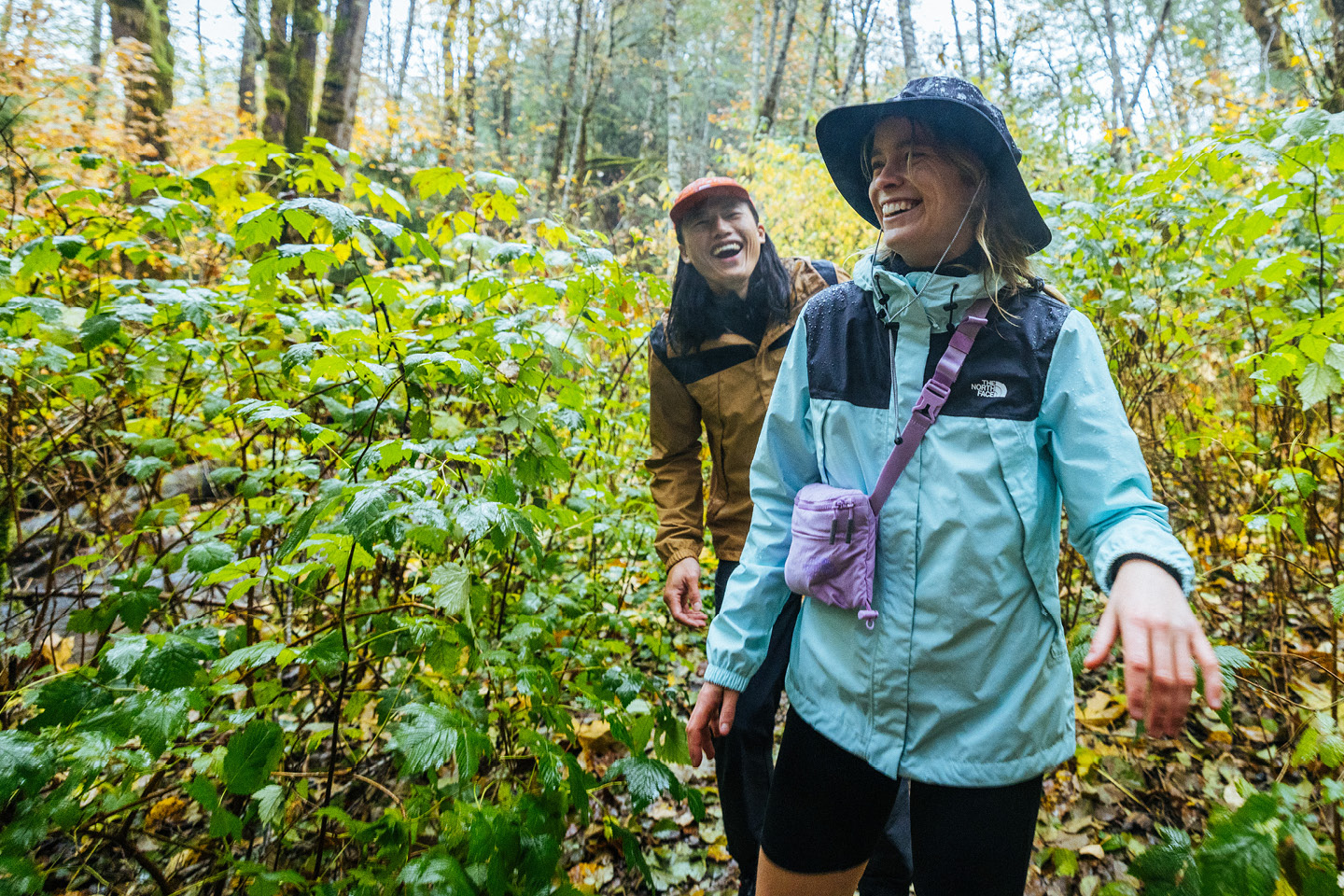
No high wind or rain forecast should ever dampen your desire to explore a new trail or camp underneath a cloudy sky. In fact, with the right gear, you will even enjoy showers and raindrops dripping on your jacket. The North Face goes to great lengths to make sure nothing can stop you. Through years of research and development, the brand has perfected its own technologies and now boasts a wide range of waterproof, breathable and ultra-comfortable rain jackets for women and men. From spring to fall, and no matter the weather, put on your The North Face rainwear and head out on an adventure.
In this article, you will learn more about the best rainwear and rain jackets from The North Face:
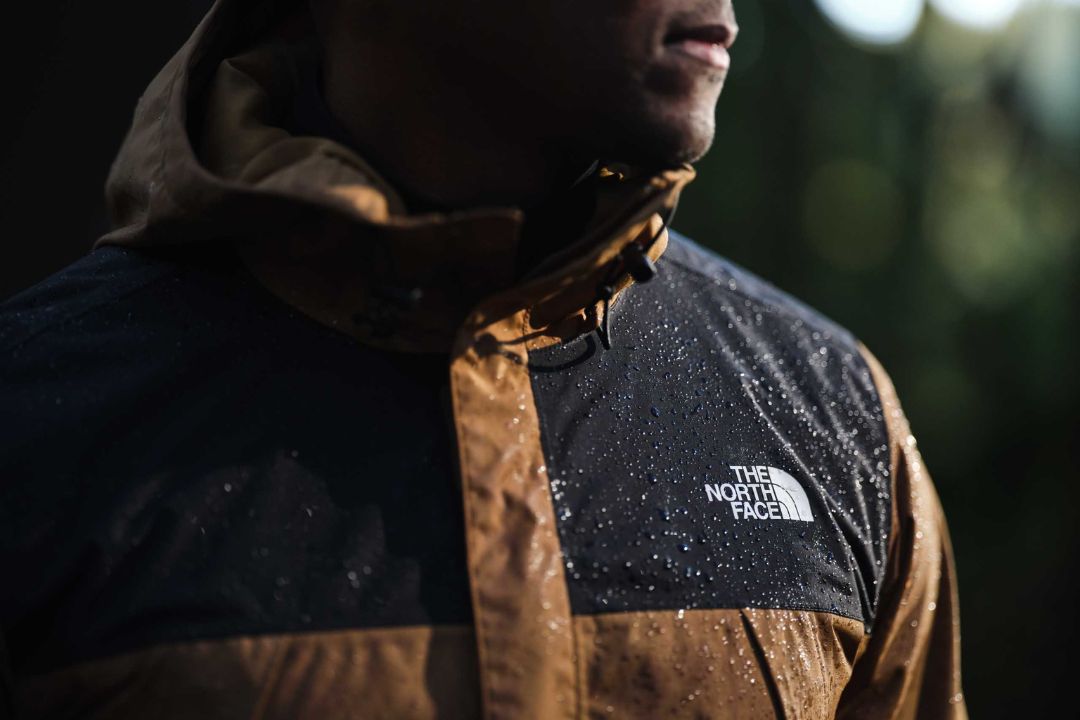
Innovation has always been at the core of The North Face’s creative process. Drawing inspiration from athletes, the brand keeps coming up with new materials and improving its manufacturing techniques. With its sights set on making high-performance rainwear for adults and kids, The North Face has developed many notable technologies such as Dryvent™, WindWall® and FUTURELIGHT™.
The North Face gathered waterproof, breathable and wind-breaking properties all in one fabric type called Dryvent™. Rain jackets featuring this technology provide all the necessary comfort and protection needed for outdoor activities. Their waterproof finish and watertight seams effectively block water to keep it from infiltrating or penetrating the fabric’s surface.
Perfect if you’re going on a hike or get caught in a surprise downpour on your way to work, Dryvent™ rainwear also has a strong focus on breathability. Any drop of moisture quickly evaporates from your technical garment so you can stay dry even under heavy rain. And in case the wind rises, there’s no need for another layer: Dryvent™ fabrics make an optimal wind-blocking barrier.
The North Face offers three versions of its Dryvent™ technology:
A good rain jacket, either from the workshops of The North Face or another brand, needs to be more than just waterproof and watertight. It must also provide effective protection against the wind.
That is precisely why The North Face developed its WindWall® technology, used both for baselayers and wind- and rain-exposed outer shells. As for its Dryvent™ technology, The North Face developed different WindWall® versions:
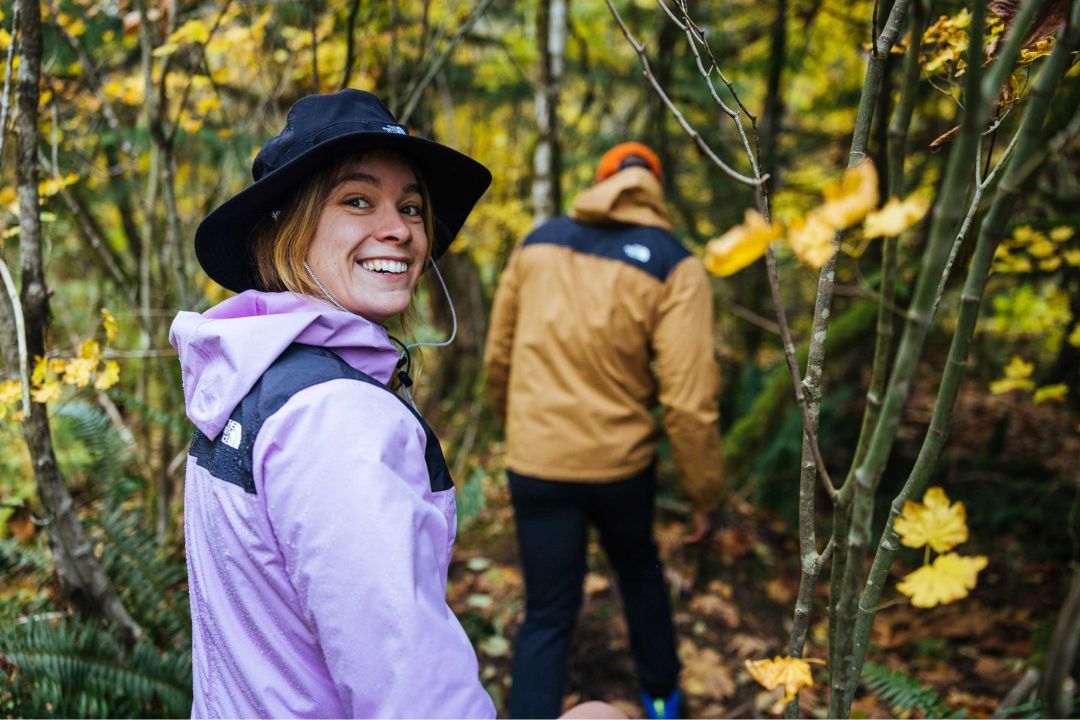
Outdoor brands these days vie in ingenuity to push their rainwear lines further, and innovation has never been so strong. The North Face manages to constantly improve its technical clothing’s performance in terms of waterproofness, breathability and comfort.
To choose the right rain jacket from The North Face, there is one crucial step: taking stock of how you like to experience the outdoors. Into climbing? Ease of movement should be your top priority. Hiking enthusiast? Choose comfort over anything else. Avid runner? Go for a lightweight, breathable jacket. And if you’re a little bit of everything, then you should aim for versatility! The Alta Vista women’s jacket, for instance, is a reference in that area. Its 100% recycled nylon construction and durable water repellent (DWR) treatment make it an excellent jacket for hiking.
A windbreaker or winter jacket may not be the best at handling rainwater. For optimal performance under the rain, you must choose a jacket expressly designed for humid conditions. It should be made from specific materials and treated to be waterproof and water-repellent. The durable water repellent (DWR) treatment used by The North Face is a great example.
You should also consider the shape, fit and comfort level of the models you like and keep an eye out for technical specificities: a hood that covers the head and neck, watertight seams and zippers, pockets, etc. If you tend to rely on the multi-layer technique, a soft shell or hard shell, depending on your needs, will be your best bet.
Always keep in mind that total waterproofness and water resistance are two different things. The North Face Antora jackets, for example, have a Dryvent™ 2L outer shell with two waterproof layers and a durable water-repellent treatment.
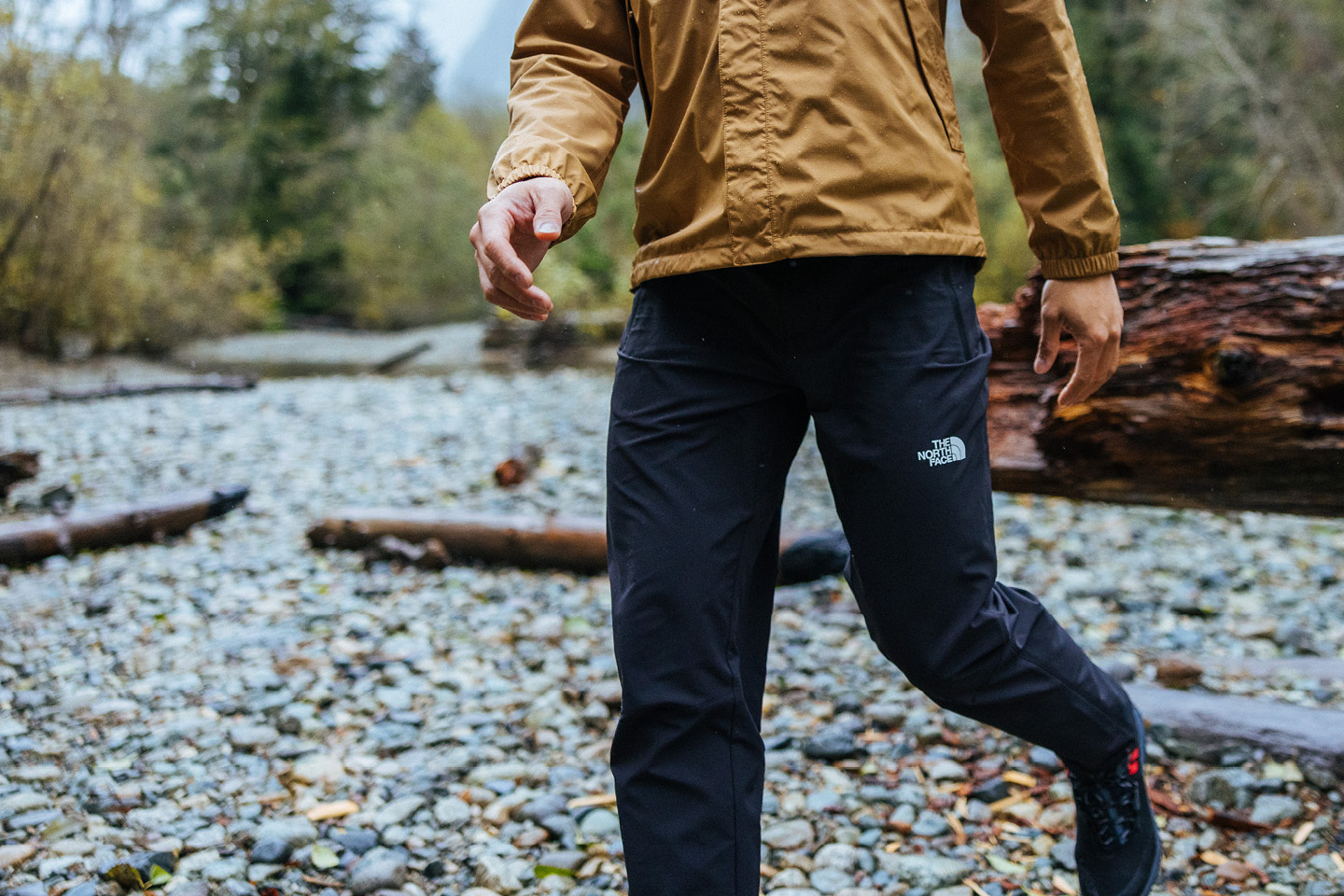
When searching for high-performance, waterproof and breathable rainwear, many tend to forget about their legs. However, wet pants can become pretty uncomfortable, especially in the middle of the woods or when the wind rises.
Luckily, outdoor brands have developed rain pants for lovers of vast spaces. Hikers, runners and camping enthusiasts who want to protect their legs from the elements have plenty to choose from. Just make sure you go for breathable pants since a lot of heat is released from the legs.
Like other brands, The North Face does not limit itself to using its own waterproof technologies for the construction of rain clothing and jackets. Gore-Tex is notably an excellent choice of material for rainpants.
Among others, The North Face has created the Antora rainpants, featuring Dryvent™ 2-layer technology and a water-repellent finish for complete waterproofness. The pants’ comfort and breathability make them a great accomplice for your spring and fall hikes.
The Bridgeway rainpants, with FlashDry-XD™ technology and durable water-repellent treatment, are another great and perhaps even more versatile option.
If temperatures are on the colder side, think of pairing your The North Face rainpants with a baselayer to maximize comfort and heat retention.
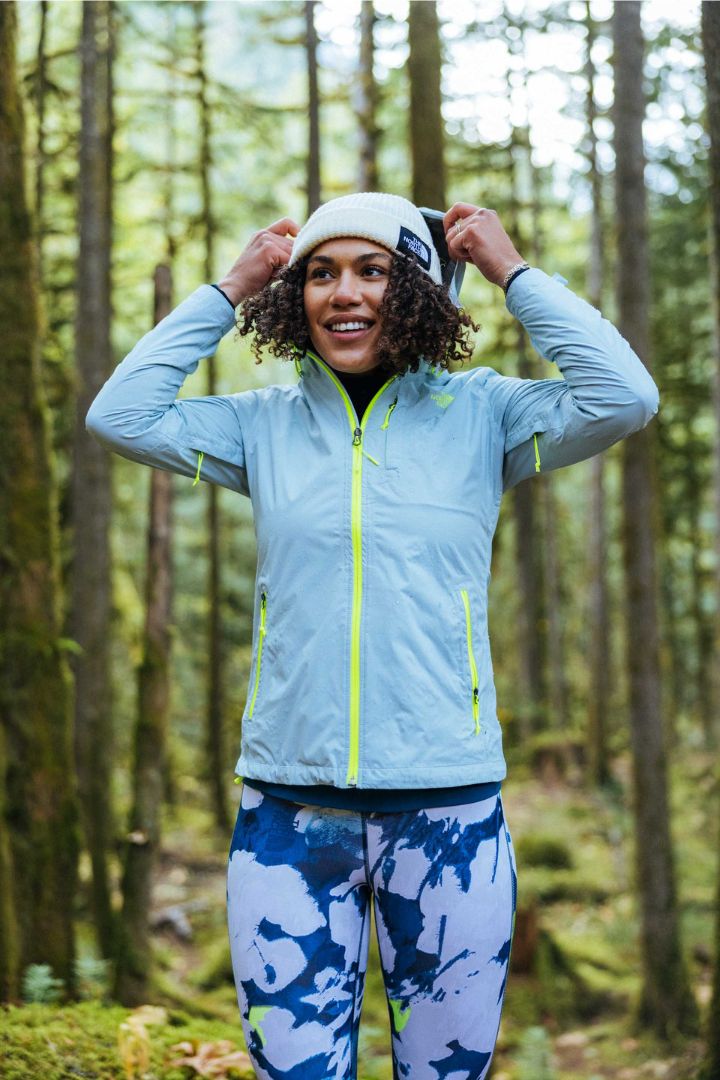
The North Face rain jackets protect you from water and wind. Combine yours with a few other layers of clothing, and you will be all set for adventure. If you want to retain body heat and stay comfortable for hours, you can’t rely on rainwear alone, no matter how innovative and high-performance it is. One word for you: multi-layer. As you may know, no multi-layer system is complete without a baselayer, especially when the thermometer drops.
The role of a baselayer is simple: it keeps humidity at bay and regulates body temperature. This garment must dry quickly in contact with the skin to keep you comfortable during active pursuits like hiking or cross-country skiing. Merino wool is the ultimate material for this due to its thermal and antibacterial properties. Cotton, on the other hand, should be avoided.
The North Face’s WindWall® technology is well suited for technical baselayers. The two fabrics were designed to counteract the cooling effects of the wind; they retain body heat, enhance comfort and provide all the ease of movement you need during your outdoor endeavours.
If you’re not a fan of wool baselayers, there’s the alternative of polyester. This material performs well at controlling humidity and is soft on the skin. The North Face Dune Sky women’s tank with FlashDry™ technology is a good choice for outdoor activities. In menswear, baselayers from the Wander collection feature the same technology and are particularly good at evacuating humidity.
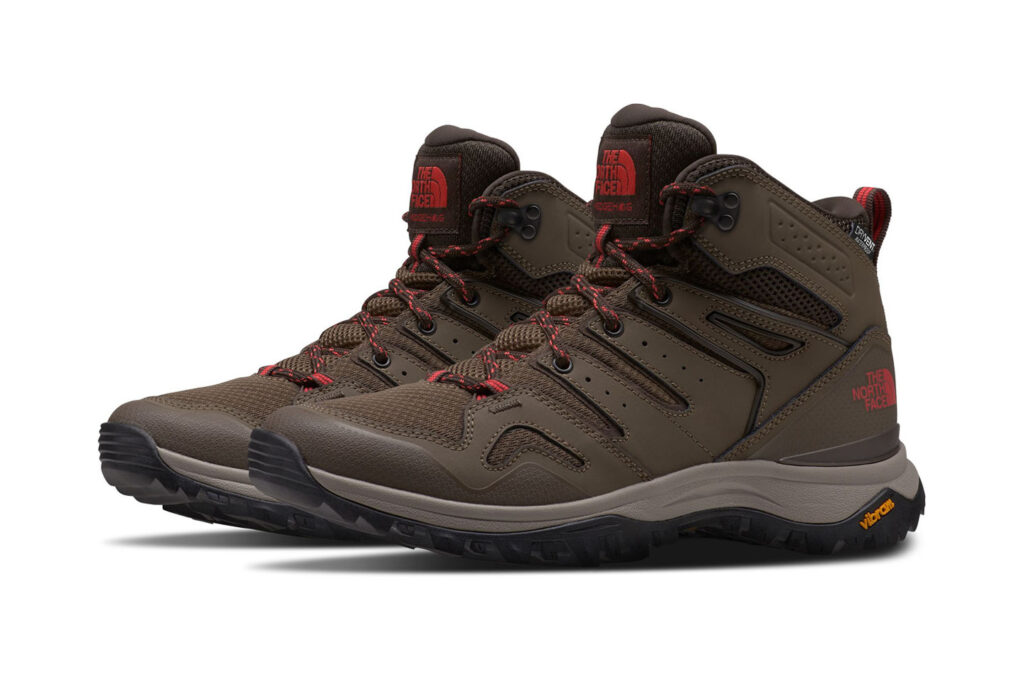
When in the great outdoors, you should steer clear of rubber rain boots, which are neither breathable nor even comfortable. But what should actually be on your feet during your wilderness adventures?
Several technologies are used in the making of boots and shoes. One of those is Gore-Tex, a material favoured by many outdoor brands. As for The North Face, its technology of choice for waterproofing footwear is Dryvent™. Rain boots and shoes with a Dryvent™ membrane are at home on rainy day hikes and wet trail running sessions. Pair them with The North Face rainpants and some merino wool or nylon socks, and you’ll be sure to keep your feet dry. Women’s and men’s Hedgehog Fastpack 2 waterproof hiking boots are a staple, as are the kids’ Fastpack Hiker Mid boots.
Some recent footwear models from The North Face are also equipped with a FUTURELIGHT™ membrane that is both waterproof and breathable. This is the case of the VECTIV Exploris 2 Mid FUTURELIGHT™, available for women and men.
The North Face never stops innovating, so you never have to stop being in action, even on rainy days. The American brand has designed a wide variety of high-performance rainwear adapted to active lifestyles. Waterproof, water-repellent, breathable and comfortable… rain jackets and footwear from The North Face will always protect you, from the depths of the woods to the soaked-up trails. With or without a chance of showers, it’s always a nice day to go outside!